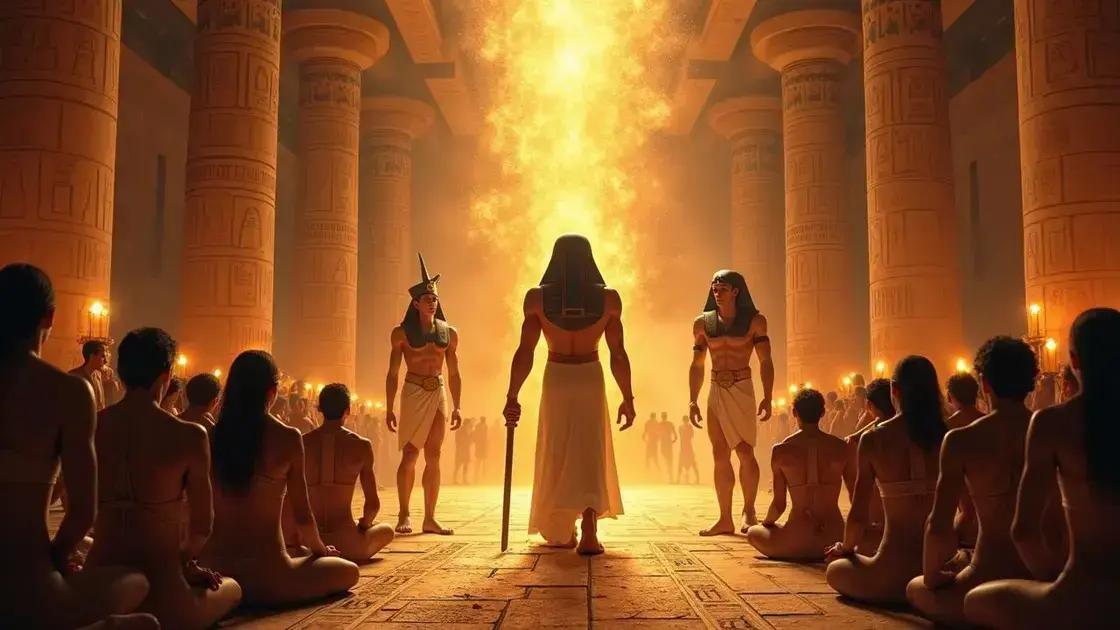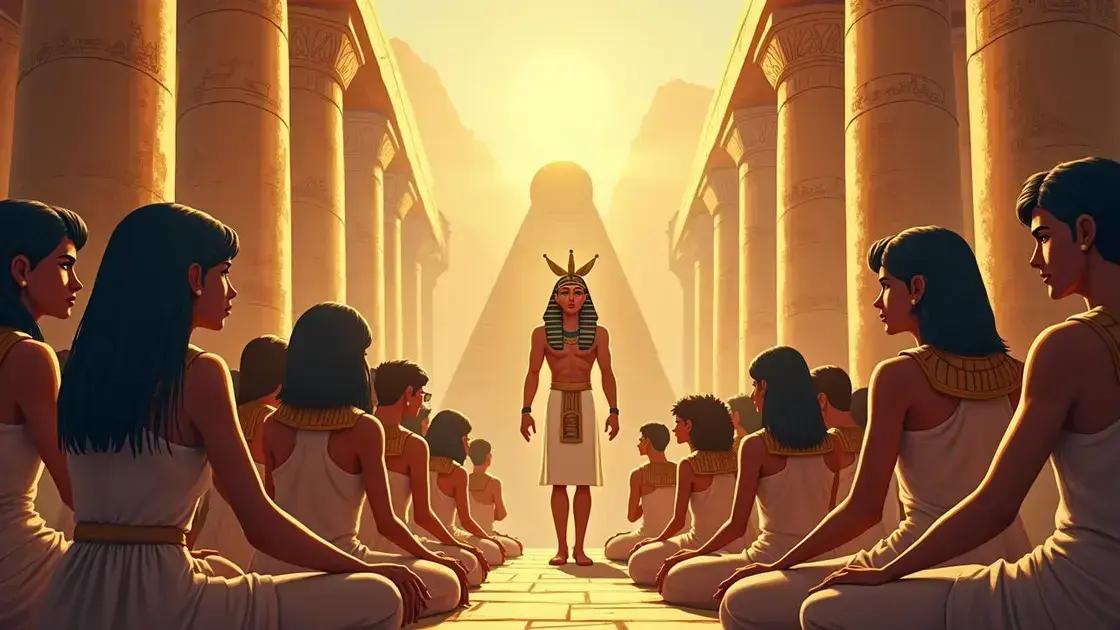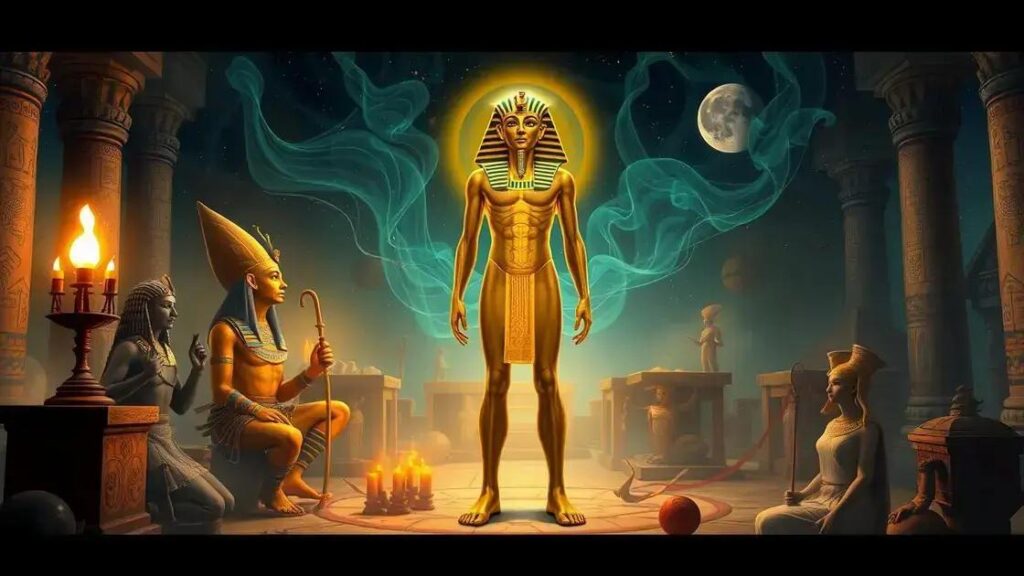The Trick of the Egyptian Pharaohs worked through psychological manipulation and powerful rituals, utilizing myths and emotional responses to establish authority, control perceptions, and reinforce social structures within ancient Egyptian society.
The captivating question of how the Trick of the Egyptian Pharaohs works in the body uncovers a blend of ancient mystique and modern science. Tales of pharaohs striking fear and awe within their realms often hint at mysterious practices that might affect both mind and body. In this exploration, we will delve into what this trick truly entails, the scientific explanations rooted in human physiology, and notable historical implications that continue to fascinate us today.
Understanding the Trick of the Egyptian Pharaohs

To understand the Trick of the Egyptian Pharaohs, we must explore the cultural and historical contexts that shaped ancient Egyptian life. Egyptian civilization was advanced and deeply connected with spiritual beliefs. The pharaohs, regarded as divine rulers, orchestrated numerous ceremonies and rituals to demonstrate their power and maintain social order.
What was the Trick?
This trick is often perceived as a form of psychological or spiritual manipulation. Through elaborate rituals, pharaohs aimed to instill awe and respect among their subjects. They utilized symbols, magic, and even misinformation to enhance their authority. Such tactics made the people believe that their rulers had direct connections to the gods.
The Role of Rituals
Rituals played a significant role in Egyptian society. They involved music, dance, and other performing arts that created enchanting experiences. These engagements were not just entertaining; they were strategic. By captivating the audience, pharaohs could unify the people around their leadership, reinforcing loyalty and obedience.
Beliefs in the Afterlife
Belief in the afterlife was a cornerstone of Egyptian spirituality. The afterlife concept influenced many of the tricks employed by pharaohs. By promising eternal life and favor in the next world, they could manipulate the populace. This ensured that they followed the pharaonic commands and honored their divine rulers.
As we delve deeper into how these tricks functioned on the human psyche, it is essential to uncover the connection between these ancient practices and their lasting impact on society. Understanding these components allows us to see how the Trick of the Egyptian Pharaohs worked on both individual and collective levels.
The Science Behind the Trick

The science behind the Trick of the Egyptian Pharaohs reveals fascinating connections between psychology, performance, and rituals. At its core, this trick involved a deep understanding of human behavior and the ways people respond to authority. Psychological principles such as suggestion, conformity, and fear played significant roles in how these tricks were executed.
Psychological Tricks Used
Psychological tricks often manipulate perception. The pharaohs created a sense of urgency or awe during ceremonies. This heightened emotion can alter how individuals perceive reality. When people are emotionally charged, they are more likely to accept extraordinary claims without skepticism.
The Role of Environment
The environment during rituals was carefully crafted. Lighting, sounds, and visuals were strategically used to enhance the experience. For instance, torches and incense produced an ethereal atmosphere, engaging the senses and heightening feelings of spirituality. This multisensory approach sharply increased the impact of the tricks.
Hormonal Responses
Scientific studies show that emotional experiences can trigger hormonal responses in our bodies. Events designed to evoke fear or joy can release adrenaline and dopamine. These hormones affect our mental states and can increase suggestibility. For example, during significant moments, audiences might overlook doubts, fully embracing the pharaoh’s message.
In understanding the science behind the Trick of the Egyptian Pharaohs, we see how these methods intertwined with beliefs and traditions. This connection propelled ancient Egyptians into a culture where the pharaoh’s word was law, supported by a blend of psychological insight and ritualistic power.
Effects on the Human Body

The effects of the Trick of the Egyptian Pharaohs on the human body are profound and multi-faceted. These rituals and ceremonies did not just influence the mind; they had real physical effects as well. Understanding how these experiences impact our bodies offers a glimpse into the connection between psychological influence and physiological responses.
Stress Responses
During intense rituals, participants often experienced stress responses due to heightened emotions, both positive and negative. The release of stress hormones, like cortisol, can lead to increased heart rate and blood pressure. These physical changes can provoke a strong sense of alertness, making individuals more susceptible to the messages being conveyed.
Altered States of Consciousness
Ritualistic practices can produce altered states of consciousness. This occurs when repetitive activities, such as chanting or dancing, are involved. These activities can trigger the brain to enter a state similar to meditation, reducing anxiety levels and fostering feelings of unity and connection with the divine. This shift enhances the emotional experience, further amplifying the tricks performed by pharaohs.
Group Dynamics
Participation in group rituals creates a phenomenon known as emotional contagion. As individuals witness others participating fervently in a ritual, they can unconsciously mirror those emotions. This shared experience can amplify the physical response—leading to synchronized heartbeats and breathing rates among the group—thereby increasing the trick’s effectiveness.
Furthermore, the effects of these rituals are not merely temporary. Repeated exposure can create lasting impacts on individual beliefs and behaviors, conditioning the body to respond in certain ways during subsequent encounters. By delving into these effects, we see how the Trick of the Egyptian Pharaohs was not just a clever manipulation but also a deeply resonant experience that engaged the body and mind.
Historical Context and Legends

The historical context of the Trick of the Egyptian Pharaohs is rich and layered, entwined with legends that have shaped perceptions of ancient Egypt. Pharaohs were not just rulers; they were believed to be gods on earth, imbued with divine power to govern and protect their people.
Role of Myths and Legends
Myths and legends played a crucial role in legitimizing the pharaoh’s authority. Stories of gods and their interactions with humanity were common. For instance, legends about Osiris and Isis provided a narrative of death and resurrection, symbolizing the pharaoh’s role in ensuring order and harmony.
Ancient Rituals as Power
Rituals performed by pharaohs were often steeped in history. These traditions tied to ancient deities reinforced their status. The Wepwawet ritual, for example, signified the beginning of a new period, marking the pharaoh’s power to control time and fate. Participants believed that these actions could invoke divine favor and protection.
Influence of Historical Events
Significant historical events also shaped legends. For instance, the unification of Upper and Lower Egypt under Narmer influenced stories of strength and unity. Pharaohs would often use these tales to consolidate power, portraying themselves as unstoppable gods who had overcome chaos.
Additionally, archaeological findings support various legends, revealing how these stories translated into monumental architecture and art that celebrated the pharaoh’s greatness. Temples and pyramids served as lasting symbols of their divine connection.
Through exploring the historical context and related legends surrounding the Tricks of the Egyptian Pharaohs, we gain insight into how they used cultural storytelling to bolster their rule and ensure the loyalty of their people.
Reflecting on the Trick of the Egyptian Pharaohs
The Trick of the Egyptian Pharaohs intertwines history, psychology, and culture into a compelling narrative of power and influence. By understanding the intricate ways in which pharaohs used rituals, storytelling, and psychological techniques, we gain insight into how they shaped their society.
The impact of these tricks extended beyond mere manipulation; they bound communities together and fostered belief in a shared identity and divine order. Historical context and legends reveal how deeply rooted these practices were in the cultural fabric of ancient Egypt, making their rulers both revered and feared.
In exploring the effects on the human body and the underlying science, it is evident that these rituals were more than performance; they had lasting psychological and physiological consequences on individuals and communities alike. The legacies of the ancient Egyptians serve as a reminder of the power of belief and the enduring human need for connection to something greater.
Understanding this rich tapestry of ancient practices allows us to appreciate the complexity of human behavior and the ways leaders have historically used their influence to guide and govern their people.
FAQ – Frequently Asked Questions about the Trick of the Egyptian Pharaohs
What was the Trick of the Egyptian Pharaohs?
The Trick of the Egyptian Pharaohs involved psychological manipulation through rituals, storytelling, and ceremonial practices to establish authority and control over their subjects.
How did rituals impact the audience?
Rituals created emotional responses that heightened group dynamics, leading to stronger connections and a collective acceptance of the pharaoh’s authority.
What scientific principles were involved in these tricks?
Psychological principles such as suggestion, conformity, and the effects of stress and hormonal responses played key roles in how the tricks were perceived and experienced.
How were myths and legends used by the pharaohs?
Pharaohs used myths and legends to legitimize their power, create a divine narrative, and instill a sense of awe and loyalty among the people.
What effects did these tricks have on the human body?
They triggered stress responses, altered states of consciousness, and emotional contagion, which collectively heightened the overall impact of the rituals.
Why is it important to study the Trick of the Egyptian Pharaohs today?
Studying these practices helps us understand the historical and psychological dynamics of power, belief, and human behavior, which remain relevant in today’s society.












